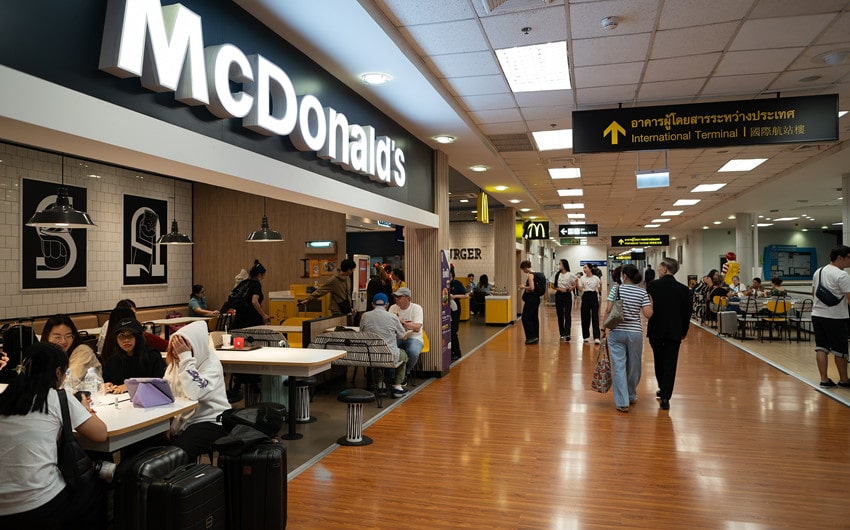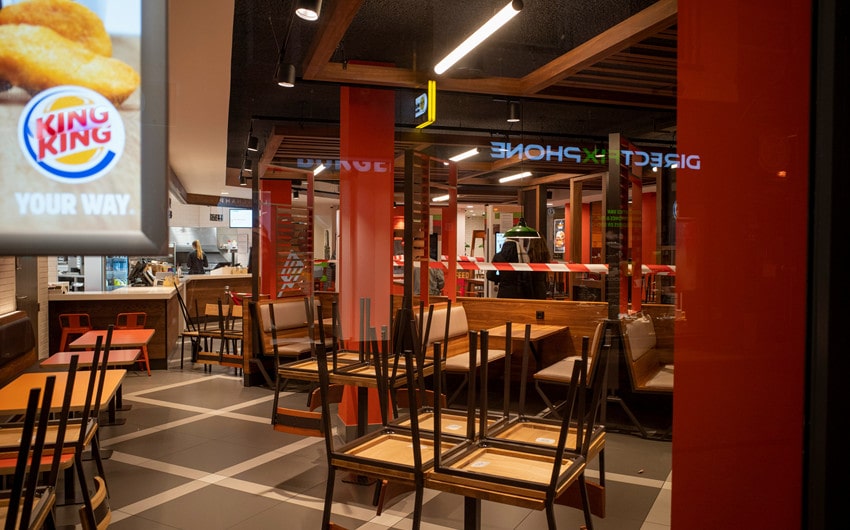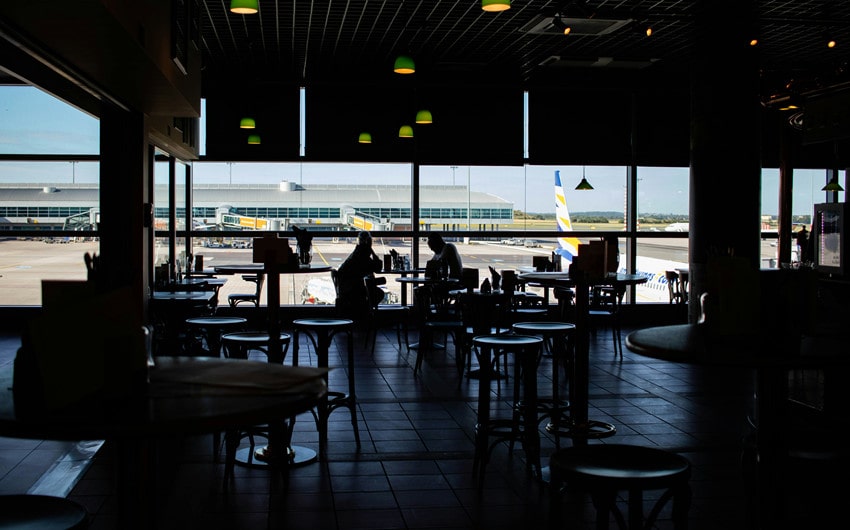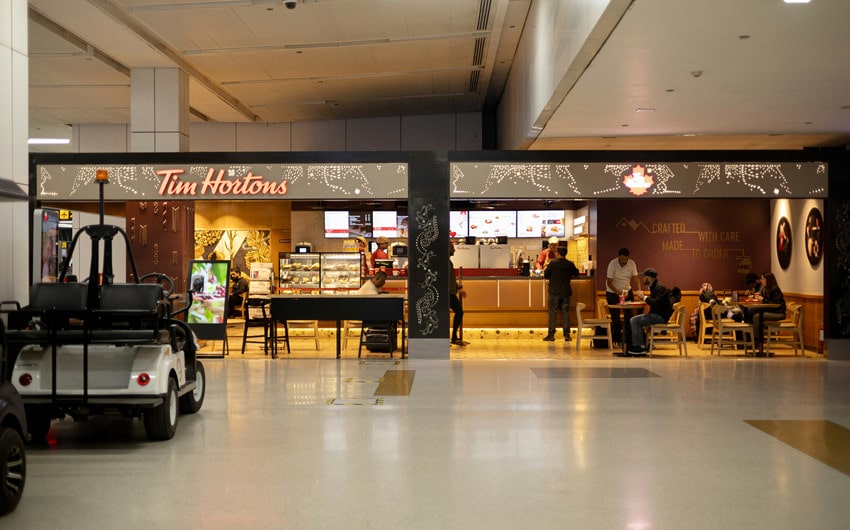Why Are Airport Restaurants So Expensive? A Look Behind The Scenes
If you’ve ever grabbed a quick bite at the airport, you’ve probably done a double take at the prices. A simple sandwich and a coffee can cost as much as a fancy dinner elsewhere. It’s a shared frustration for travelers everywhere, leading many to wonder: why are airport restaurants so expensive?
Whether you’re rushing to catch a flight or waiting out a long layover, paying extra for food seems almost unavoidable. But there’s more to the story than just high markups. Let’s dig into the real reasons behind those sky-high airport food prices.
Higher Operating Costs
Running a restaurant inside an airport is far more expensive than running one on a typical city street. Airports charge vendors extremely high rent rates, often many times higher than what restaurants would pay at a shopping mall or local strip center. This is partly because airport real estate is so limited and valuable. Every square foot is at a premium, and restaurants have to pay handsomely just to secure a spot inside.
In addition to rent, airports often charge for maintenance, utilities, and access fees. These additional costs add up quickly, creating a financial burden that restaurants must manage somehow. Instead of eating into their already tight profit margins, many choose to pass these costs directly onto the consumer, leading to the inflated prices travelers frequently encounter.
The cost of simply existing within the airport environment also includes marketing fees, insurance requirements, and stricter operational standards. Restaurants must meet specific aesthetic and service guidelines to maintain the airport’s image, which requires additional investment in staff training, décor, and technology. All of these factors combine to push menu prices higher than what travelers are used to seeing elsewhere.
Security and Logistics Challenges
Supplying an airport restaurant isn’t as simple as backing a truck up to the back door. Every product that enters an airport must pass through security screening, whether it’s food, equipment, or cleaning supplies. This extra layer of inspection means deliveries are slower, require more coordination, and often cost more because vendors must meet strict compliance standards.
Restaurants operating inside airports frequently have limited windows for receiving shipments, and missing a delivery could mean running out of key ingredients during a busy travel rush. To avoid this, vendors often have to pay premium rates for just-in-time deliveries, refrigerated trucking, and specialized freight services that can navigate the security requirements without causing operational delays.
There’s also the hidden cost of space limitations. Airport kitchens and storage areas are usually much smaller than in traditional restaurants, which means inventory must be replenished more often. More deliveries mean higher shipping and logistics costs, and ultimately, higher prices for the customer sitting at the table or grabbing a meal to-go.
Limited Competition
Unlike city centers filled with competing eateries, airports severely limit the number of restaurant vendors. Contracts are often awarded through a bidding process that considers factors like brand reputation, financial strength, and the ability to handle the unique demands of an airport environment. Once awarded, a vendor often operates with minimal direct competition nearby.
With fewer choices, travelers have little incentive to shop around for better prices. A burger at one terminal may cost just as much, if not more, than a similar burger at another, and the lack of variety keeps demand relatively stable even when prices rise. Vendors know they don’t need to offer deep discounts to attract customers who have few other dining options available.
This controlled environment removes the typical market pressure that drives prices down in other places. In a downtown setting, a new restaurant offering lower prices could easily force nearby businesses to adjust. In an airport, the food court is often locked into long-term contracts, meaning competition remains minimal, and the customer bears the brunt of higher costs.
Premium for Convenience
One of the most important reasons why airport food is so expensive comes down to sheer convenience. When you’re rushing through a crowded terminal, juggling luggage, tickets, and tight boarding times, the value of a quick, easy meal skyrockets. Travelers are often willing to pay more simply to grab something fast and avoid the stress of hunting for cheaper alternatives.
Airport restaurants cater to this urgent need by positioning themselves directly along busy walkways, near gates, and inside waiting areas. The convenience of location and speed of service gives them the ability to charge premium prices. Even a bottled water or small snack can cost double or triple what it would outside the airport because travelers prioritize accessibility over cost when they are short on time.
Additionally, many travelers feel a sense of “temporary splurging” while on the go. Being on vacation, heading home after a long trip, or preparing for a long flight makes people more willing to spend for the sake of comfort and simplicity. Restaurants know this and adjust their pricing models to capitalize on the convenience factor.
Labor Costs
Hiring employees to work in an airport restaurant comes with challenges that most other locations never have to face. Workers must undergo thorough background checks and sometimes even receive security clearances to work behind the scenes at an airport. This screening process takes time, costs money, and can lead to staffing shortages that drive up wages.
Moreover, airports often operate around the clock, especially in major hubs. Restaurants must staff employees for early-morning flights, late-night layovers, and everything in between. This need for 24/7 coverage typically requires offering higher wages or incentives for night shifts, weekend work, and holiday hours—costs that inevitably get reflected in menu prices.
Beyond pay, training requirements are higher for airport restaurant staff. Employees must learn not only traditional food service skills but also airport-specific procedures regarding security, customer interactions with international travelers, and compliance with federal regulations. The extra training investment adds another layer to the operational costs that restaurants need to recover through higher pricing.
Revenue Sharing with Airports
Many airport restaurants operate under a revenue-sharing agreement, where a portion of every sale must be paid to the airport authority. This setup differs from traditional leases, where businesses simply pay a set amount of rent each month regardless of sales volume. In airports, the more a restaurant sells, the more they owe.
This model incentivizes airports to partner with high-earning vendors but also creates a financial strain for the businesses themselves. To maintain profitability while giving up a portion of their income, restaurants often mark up their menu items significantly higher than they would at a traditional location.
On top of percentage-based revenue sharing, there are often minimum guaranteed payments built into the contracts. That means even if business slows down—say, due to flight cancellations or seasonal travel dips—restaurants still owe a hefty sum. To cover these minimums and avoid losses, they must set prices higher across the board year-round, even during slower months.
Psychological Pricing Factors
Finally, the psychology of travel spending plays a huge role in why airport restaurants can charge so much without losing customers. When people travel, they often shift into a different mindset—one where everyday financial habits are temporarily suspended. This “vacation mentality” leads many to justify higher expenses with thoughts like “I’m already spending money on this trip” or “I deserve a treat.”
Airport vendors are well aware of this behavior and price their offerings accordingly. Meals, snacks, and drinks are priced at a premium because travelers are less price-sensitive in the moment. The urgency to eat, the excitement of a trip, or even the boredom of a long layover can weaken a traveler’s usual budgeting instincts.
Additionally, there’s a phenomenon known as “menu fatigue.” After walking past multiple expensive restaurants and snack shops, the high prices start to feel normal. A $15 sandwich doesn’t seem outrageous anymore after you’ve seen $7 bottled waters and $10 bags of trail mix. This gradual adjustment of expectations makes travelers more willing to spend more than they typically would outside the airport.



